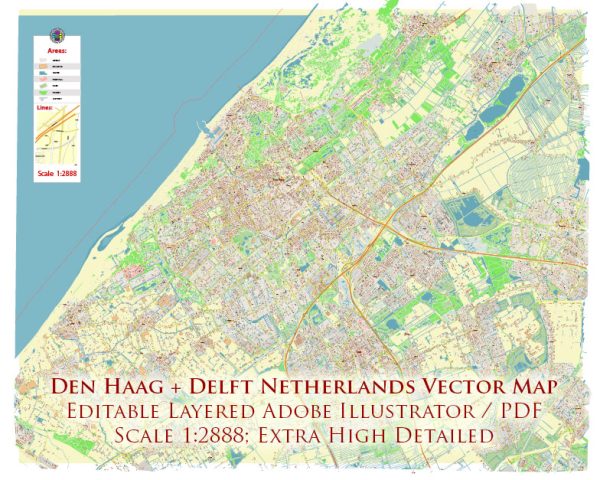The history of urban development in The Hague (Den Haag) and Delft in the Netherlands is rich and intertwined with the broader historical context of the region. Both cities have played significant roles in the political, cultural, and economic development of the Netherlands.
The Hague (Den Haag):
- Medieval Origins: The Hague traces its roots back to the 13th century when it was founded near a hunting lodge of the counts of Holland. It initially served as a residence for the nobility.
- Seat of Government: In the 16th century, The Hague became the political center of the Dutch Republic, housing the States General and the residence of the stadtholder. This solidified its role as the de facto capital.
- Expansion and Urban Planning: During the 17th century, The Hague saw significant expansion and urban development. The Binnenhof, a medieval castle turned political center, underwent modifications. The construction of grand avenues, parks, and canals also characterized this period.
- 19th Century Modernization: The 19th century brought further modernization to The Hague, with the development of new neighborhoods, public buildings, and parks. The city evolved as a hub for diplomacy and international relations.
- 20th Century and Beyond: The Hague continued to grow in the 20th century, with the expansion of residential areas and the development of modern infrastructure. It remains a crucial political and administrative center, housing international institutions like the International Court of Justice.
Delft:
- Medieval Beginnings: Delft’s history dates back to the 11th century. It thrived as a trade center due to its location on a waterway connecting major Dutch cities.
- Golden Age Prosperity: Like many Dutch cities, Delft prospered during the Golden Age (17th century). The city became known for its Delftware, a distinctive blue and white pottery.
- Technical and Artistic Achievements: Delft is renowned for its technical and artistic contributions. The painter Johannes Vermeer lived and worked here during the 17th century, contributing to the city’s cultural richness.
- Urban Planning and Canals: Delft’s medieval city plan, with its canals, is well-preserved. The Oude Delft, the city’s central canal, is lined with historic buildings and reflects the city’s architectural heritage.
- Modern Development: In the 20th century, Delft underwent modernization while preserving its historic character. The city is home to Delft University of Technology, which has influenced the urban landscape and the city’s focus on technology and innovation.
Both The Hague and Delft showcase the evolution of Dutch urban development, blending historical preservation with modernization, making them unique and culturally significant cities in the Netherlands.


 Author: Kirill Shrayber, Ph.D.
Author: Kirill Shrayber, Ph.D.